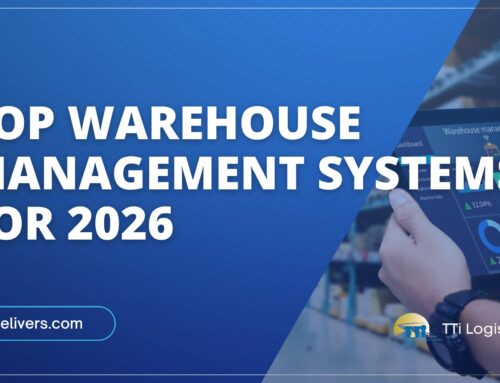From Warehouse to Doorstep: The Journey with Top Logistics Companies
In today’s fast-paced world of e-commerce, where consumers expect seamless delivery experiences, the role of warehouse logistics has never been more critical. From the moment an order is placed online to its arrival at the customer’s doorstep, top logistics companies orchestrate a complex dance of inventory management, transportation, and distribution. In this blog post, we’ll delve into the journey of a package from warehouse to doorstep, exploring the key players, processes, and technologies that make it all possible.
Understanding Warehouse Logistics
Warehouse logistics, often referred to as warehousing and distribution, encompasses the processes involved in storing, handling, and moving goods within a warehouse facility. It’s the backbone of any supply chain operation, serving as the hub where products are received, sorted, stored, and ultimately shipped to their final destinations.
Key Components of Warehouse Logistics:
- Receiving and Unloading: The journey begins when goods arrive at the warehouse. Whether delivered by suppliers or manufacturers, each shipment must be carefully received, inspected, and unloaded. This process involves coordination between warehouse staff and transportation providers to ensure smooth and efficient operations. Upon arrival, goods are checked for accuracy, quality, and quantity before being recorded into inventory systems.
- Inventory Management: Once received, items are assigned a designated storage location within the warehouse. Inventory management systems track the movement of goods in real-time, ensuring accurate stock levels and efficient order fulfillment. Advanced software solutions provide insights into inventory turnover rates, allowing companies to optimize storage space and reduce carrying costs. Additionally, inventory management systems enable companies to implement just-in-time inventory practices, minimizing excess inventory and reducing storage costs.
- Storage and Organization: Warehouses are meticulously organized to maximize space and facilitate easy access to inventory. Items may be stored on shelves, pallets, or in automated storage systems, with careful consideration given to factors such as product size, weight, and demand. Efficient storage solutions, such as vertical shelving and mezzanine levels, help companies make the most of their warehouse space. Moreover, warehouse layout optimization ensures efficient workflows and minimizes travel distances for warehouse personnel.
- Order Picking and Packing: When an order is received, warehouse staff spring into action, retrieving the necessary items from storage and preparing them for shipment. This process, known as order picking and packing, requires precision and speed to meet customer expectations. Companies employ various picking methods, including batch picking and zone picking, to optimize efficiency and minimize labor costs. Furthermore, advanced picking technologies, such as pick-to-light and voice-directed picking, enhance accuracy and productivity in the order fulfillment process.
- Shipping and Transportation: Once packed, orders are handed off to carriers for transportation to their final destinations. Logistics companies work with a network of carriers to transport packages to their destinations. Depending on the size, weight, and urgency of the shipment, packages may be shipped via ground, air, or sea freight. Advanced transportation management systems (TMS) optimize shipping routes, consolidate shipments, and provide real-time tracking updates to customers. Additionally, companies leverage freight consolidation and multi-modal transportation strategies to reduce shipping costs and improve delivery reliability.
The Journey of a Package
- Order Placement: It all begins when a customer places an order online through an e-commerce platform or retailer’s website. Behind the scenes, sophisticated order management systems transmit the order details to the nearest warehouse for fulfillment. These systems integrate with inventory management software to check stock availability and allocate inventory for the order. Furthermore, order management systems enable companies to prioritize orders based on factors such as customer location, shipping method, and order value.
- Order Processing: Upon receiving the order, warehouse personnel swing into action. Using handheld scanners or voice-directed picking systems, they locate the items within the warehouse and gather them for packing. Advanced warehouse management software optimizes the picking process, minimizing travel time and maximizing efficiency. Some companies employ robotics and automation to further streamline order processing and reduce labor costs. Additionally, order processing workflows are continuously optimized through process analysis and performance metrics monitoring.
- Packing and Labeling: Once all items are gathered, they’re carefully packed into boxes or shipping containers. Packaging materials such as bubble wrap, packing peanuts, and cardboard boxes are used to protect fragile items during transit. Each package is then labeled with a unique tracking number for easy identification and tracing. Automated packing systems ensure consistency and efficiency, while smart packaging solutions, such as temperature-sensitive labels, provide real-time monitoring of package conditions during transit. Moreover, companies implement sustainable packaging practices to minimize environmental impact and reduce packaging waste.
- Shipping and Transportation: With orders packed and labeled, they’re ready for shipment. Logistics companies work with a network of carriers to transport packages to their destinations. Depending on the size, weight, and urgency of the shipment, packages may be shipped via ground, air, or sea freight. Advanced transportation management systems (TMS) optimize shipping routes, consolidate shipments, and provide real-time tracking updates to customers. Additionally, companies leverage freight consolidation and multi-modal transportation strategies to reduce shipping costs and improve delivery reliability. Furthermore, companies collaborate with carriers to implement eco-friendly transportation initiatives, such as alternative fuel vehicles and carbon offset programs.
- Last-Mile Delivery: The final leg of the journey, known as last-mile delivery, involves transporting packages from distribution centers to customers’ doorsteps. This is often the most challenging and costly part of the delivery process, particularly in urban areas with dense populations. To streamline last-mile delivery, logistics companies leverage route optimization software, GPS tracking, and innovative delivery methods such as drones and autonomous vehicles. Some companies partner with local delivery providers or implement locker solutions to offer flexible delivery options and reduce delivery times. Moreover, companies utilize crowd-sourced delivery platforms and on-demand delivery services to meet customer demand for same-day and next-day delivery.
The Role of Technology in Warehouse Logistics
Technology plays a central role in modern warehouse logistics, enabling companies to streamline operations, improve efficiency, and enhance the customer experience. Here are some of the key technologies driving innovation in the field:
- Warehouse Management Systems (WMS): WMS software provides real-time visibility into warehouse operations, allowing companies to track inventory levels, monitor order status, and optimize workflow. Advanced WMS solutions utilize predictive analytics and machine learning algorithms to forecast demand, optimize inventory levels, and improve order accuracy. Additionally, WMS systems integrate with other enterprise systems, such as ERP and CRM platforms, to enable seamless data sharing and process automation.
- Automated Storage and Retrieval Systems (AS/RS): AS/RS systems use robotics and automation to store and retrieve inventory, reducing the need for manual labor and maximizing storage capacity. These systems increase picking accuracy, reduce picking times, and minimize the risk of inventory damage. Moreover, AS/RS systems support multi-channel fulfillment strategies by enabling dynamic slotting and fast order processing.
- RFID and Barcode Scanning: RFID tags and barcode scanners are used to track the movement of goods throughout the warehouse, enabling companies to accurately monitor inventory levels and reduce errors. RFID technology provides real-time visibility into inventory location and status, allowing companies to improve inventory accuracy and reduce stockouts. Additionally, RFID and barcode scanning technologies enable companies to implement traceability and serialization initiatives, ensuring compliance with regulatory requirements and supply chain standards.
- Predictive Analytics: By analyzing historical data and market trends, logistics companies can forecast demand, optimize inventory levels, and anticipate supply chain disruptions. Predictive analytics solutions use machine learning algorithms to identify patterns and trends in data, enabling companies to make data-driven decisions and improve operational efficiency. Moreover, predictive analytics tools enable companies to perform what-if analysis and scenario planning, allowing them to assess the impact of potential disruptions and implement proactive mitigation strategies.
- IoT and Sensor Technology: Internet of Things (IoT) devices and sensor technology provide real-time insights into warehouse conditions, such as temperature, humidity, and inventory levels, allowing companies to proactively identify and address issues. IoT sensors monitor equipment performance, track asset location, and provide predictive maintenance alerts, reducing downtime and improving overall warehouse efficiency. Furthermore, IoT-enabled devices, such as smart shelves and pallets, enable companies to automate inventory management tasks and optimize storage space utilization.
Beyond the Box: Innovating the Last Mile in Logistics
From warehouse to doorstep, the last-mile journey of a package involves a complex interplay of people, processes, and technology. Top logistics companies leverage advanced warehouse logistics systems and innovative technologies to streamline operations, improve efficiency, and deliver exceptional customer experiences. As e-commerce continues to grow and evolve, the role of warehouse logistics will only become more critical in meeting the demands of today’s consumers.
In conclusion, the journey from warehouse to doorstep is a testament to the ingenuity and innovation of the logistics industry, where every step of the process is carefully orchestrated to ensure the seamless delivery of goods to customers around the world. As technology continues to advance and consumer expectations evolve, logistics companies will need to adapt and innovate to stay ahead of the curve. But one thing is certain: as long as there are packages to be delivered, the journey from warehouse to doorstep will continue, powered by the tireless efforts of the logistics professionals who make it all possible.







